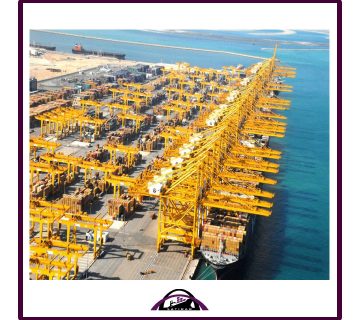As an Iranian Shipping company, we offer our clients services such as groupage shipments, LTL shipments, and FTL shipments.
Whether a cargo is palletized, non-palletized, express or oversize/overweight, we assure our clients that we have a solution in place to meet their needs. We also have options for ADR shipments for groupage, LTL & FTL dependant on class.
Please do not hesitate to contact our logistics team if you require any information regarding our services to Iran.
[toc_genius]
Iran’s strategic position of shipping
Iran has a strategic position in the Middle East and has access to international waters through its Persian Gulf and Oman Sea. In terms of international strategic and traffic importance, Hormuz is one of the most important world straights. It separates the Iran Plateau from the Arabian Peninsula and connects the Persian Gulf to the Oman Sea and Indian Ocean. As a matter of fact, Iran has a northern connection to the Caspian Sea, allowing it to conduct sea transport with neighbouring countries.
Iran shipping in Persian Gulf & Oman Sea
The Persian Gulf comprises 237, 473 square kilometers and is located along the Oman Sea and between Iran and the Arabian Peninsula. After Mexico Gulf & Hudson Bay it is a third biggest world Gulf. Persian Gulf is connected to the India Ocean &Arab Sea through Hormuz straight & Oman Sea from East and Shatt Al-Arab River, which is joined to the Tigris and Euphrates rivers & Karun from West.
Here is 3 most important shipping ports in Iran:
Rajaee Port
Nearly half of Iran’s trade with the Ministry of Maritime Affairs and cargo exchange with 80 renowned foreign ports take place in the Rajaee Economic Zone, which is situated 23 km west of Bandar Abbas in the northern part of the Qeshm and Hormuz Strait.
The economic zone is located between the transit corridor, which is the most significant corridor in the world, and the north. Across Iran, it connects the Indian Ocean and the Persian Gulf with the Caspian Sea. From there, it travels through Russia to St. Petersburg and northern Europe.
With its proximity to Kish and Qeshm free zones, ports of the Persian Gulf, access to the high seas through the Persian Gulf, connections to the international railway and the Silk Road, and sophisticated equipment and facilities, it has a strategic and distinctive location.
Bahonar Port
One of the older multi-modal provinces and operational Iranian ports is Bahonar. Its port, which is the third-largest exporting nation’s, faces unique challenges with regard to the export of non-oil goods, transportation, and both domestic and international passenger travel.
These attributes have made it the strategic and distinctive base after Rajaee Port due to its unique geographic advantages for accessing the wide global seas through the Persian Gulf, access to the international connection, near proximity to Qeshm free areas, and commercial ports on the Persian Gulf.
It used to be the major port for BND, and it still hosts large numbers of tourists and travelers every day. A sizeable portion of BND trade depends on the activity of the port, and the area benefits greatly from its location within BND’s range.
Having a completed 10, 2 meter pond reflow after the Imam Khomeini and Rajaee ports between ports in the nation is this port’s unique attribute.
BEHESHTI port ( CAHABAHAR)
Due to its strategic position for transshipment and transit of goods into the Persian Gulf, Afghanistan, and Middle Asian ports, Chabahar, in the northern part of the Oman Sea, can play a particularly important role.
The strategic location and central position of the port in relation to the development of the east have prompted the Ports and Maritime Organization to put on its agenda the development and implementation of a comprehensive development plan under the form of a medium-term plan.
Among these projects are the construction of two container berths with 640 meters length and 16 meters waterline as well as the construction of three multipurpose berths with 580 meters length and a depth of 14 meters and the dredging of 17 million cubic meters to a depth of 16 meters.
A variety of goods can be handled at the port, including public services, bulk products, petroleum products, barges, floating water, and storage and processing.
Our Linkedin Page : Click Here




No comment